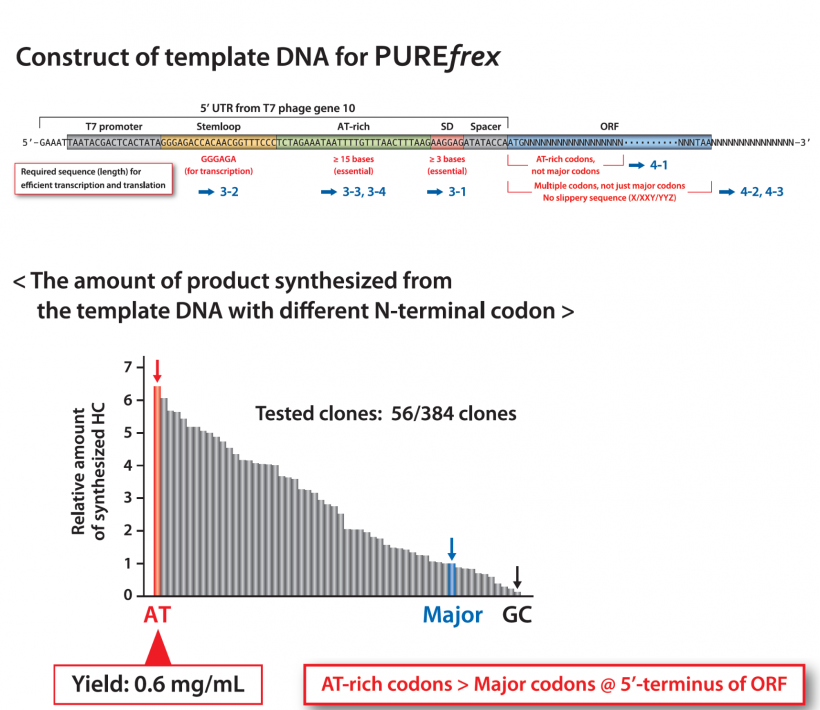【Poster_MBSJ 2021】Exploration of the template DNA sequence suitable for the E. coli-based reconstituted cell-free protein synthesis system (PUREfrex®)
Download PDF (1 MB)
DownloadsKeywords
PUREfrex® 2.1 / Template DNA optimization / 5′UTR optimization / Open reading frame (ORF) optimization
Abstract
PUREfrex® is a build up cell-free protein synthesis system (PURE system) that consists of the factors involved in transcription and translation in E. coli. With the improvement of the reaction mixture, the synthesis amount of the product has been increased up to about 1 mg/ml. We are also investigating the effects of template DNA sequences on transcription and translation, and here we report the findings obtained so far regarding the ORF and 5'UTR of template DNA. The experiment was carried out by preparing various PCR products with different ORF or 5'UTR sequences, synthesizing with them in PUREfrex®, and comparing the amounts of the synthesized products.
First, the codon usage of ORF was examined. For the entire ORF, we compared the amount of synthesized products when using only the codon most frequently used in E. coli or when using several codons according to the frequency for each amino acid. As a result, the amount of the product increased when several codons were used. Also, for codons down to 6 to 10 amino acids after the start codon, the amount of synthesized product was larger when using codons with higher AT content than when using codons which are frequently used in E. coli. In particular, there ware cases showing the amount of synthesized products increased 10-fold or more simply by changing the codons of just several amino acids in the N-terminal region.
Next, the 5'UTR was examined. The currently used 5'UTR contains stem-loop region, AT-rich region, and ribosome-binding sequence (SD sequence) downstream of the T7 promoter. The sfGFP protein was synthesized from genes combined with various 5'UTRs (presence or absence of each region, or deletion of each region), and their fluorescence amounts were compared. As a result, the following was found: 1) The 6 bases on the 5'side of the stem-loop region are required for efficient transcription by T7 RNA polymerase; 2) When the SD sequence is completely deleted, the amount of synthesis decreases to 10% or less, but if 3 or more bases are present, sufficient amount of synthesis can be obtained; 3) When the AT-rich region is deleted, the amount of synthesis decreases to 10% or less. In the 5'UTR, it was shown that not only the SD sequence but also the AT-rich region is important for efficient translation.

